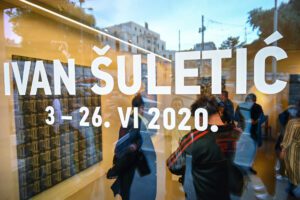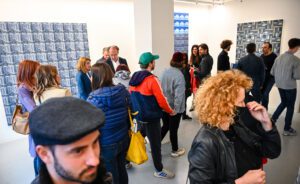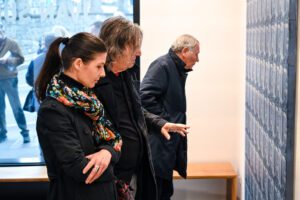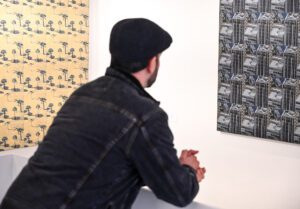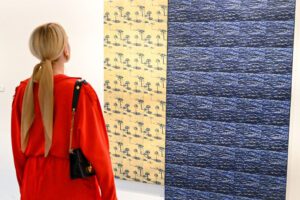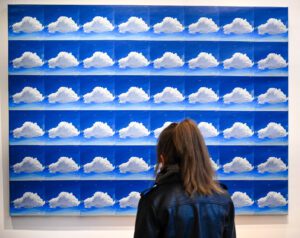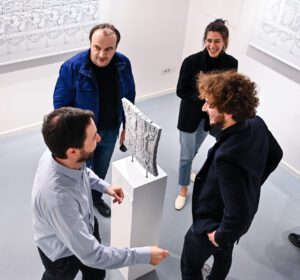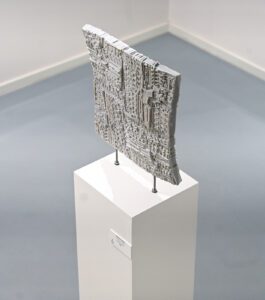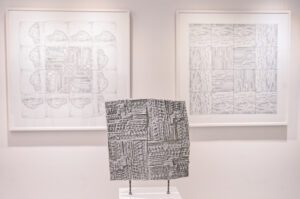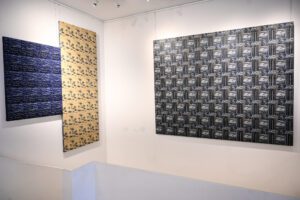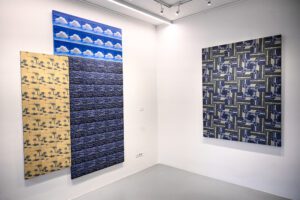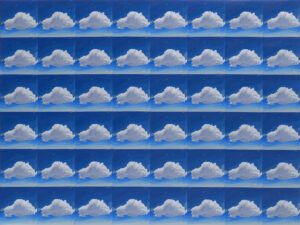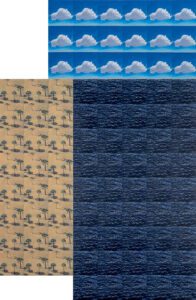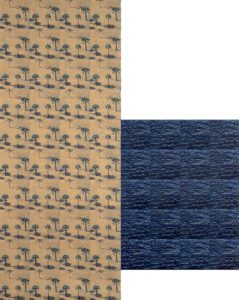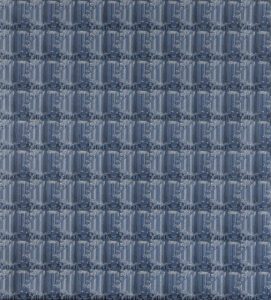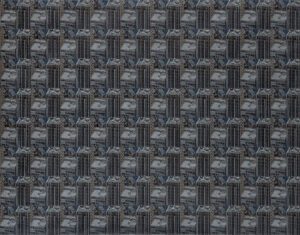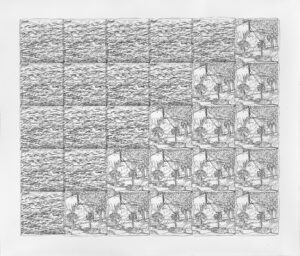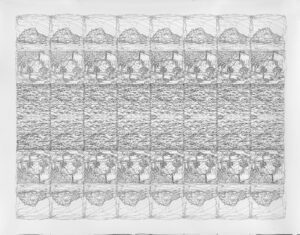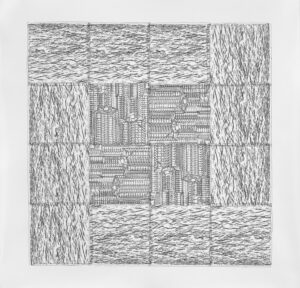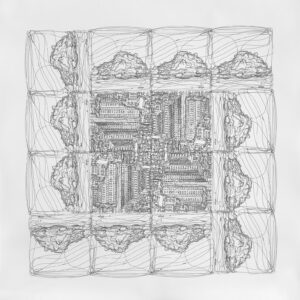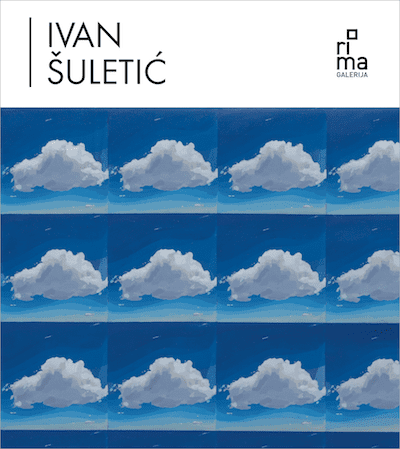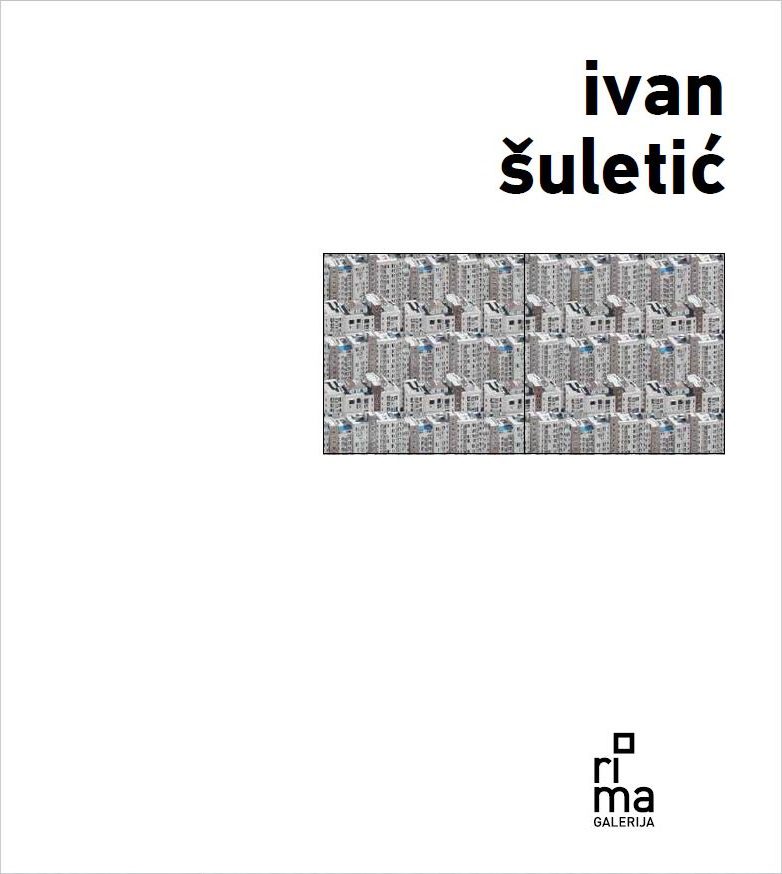Marija Stanković
#ANYWHEREARCHITECTURE
…a world without landmarks, a branded Sprawl, where markable territory has been replaced by endlessly repeating vistas of replicating franchises.
Representations of urban and natural environments of a contemporary city appear as main supports in the artistic practice of Ivan Šuletić, and the artist uses it to problematize the relationships of perception, representation and understanding of the link between material and virtual reality. The role of (urban) cityscapes in his works has been interpreted as polysemic praxis with auto-reflexive, art-historic, sociological and cultural connotations. The relationship to digital photographs and virtual mechanisms as supports of Šuletić’s works has been analysed through his visual methodological procedure leading to picture as the consequence of an exchange of digital visual information, to picture that makes visible the individual absence in virtual experience. The artist explains the idea of the city – he has been engaged in since 2015 – through the concept of non-place. In this case, those are urban spaces without any iconography of the past, the type of architecture that could be located anywhere in the world where one cannot locate or identify ideas, traces and consequences of its belongingness to a certain culture. With the processes of globalisation and a fast fluctuation of capital, formats of the newly produced architectural structures become uniform patterns. One can find them anywhere on the planet, in Far and Near East, in Europe, Africa, anywhere in the virtual space whose archive of stored data is impossible to systematise.
Without dominant ideological frameworks that have existed since the late eighties, in accordance with the post-definition of the time we live in, the architectural idea of the new millennium is related to the contemporary moment. A recognisable type of architecture has been multiplied throughout the world as a consequence of capitalist realism, which has progressed from belief to the aesthetic, and liberated us from those fatal abstractions inspired by past ideologies. Apart from existing as the atmosphere of contemporaneity, capitalist realism, as an artistic phenomenon from the 1960s, possesses certain visual principles and reactions to the constructions of reality that we find in Šuletić’s artworks. In the sixties, artists used fragments of advertisements for new products in order to emphasise in their works all aspects of commodification and consumerism. Šuletić downloads from the Internet digital photographs of architectural structures and sections of nature, not necessarily of promotional nature but certainly reflections of the contemporary hyper production of photographs – a match to the emphasised spreading of investors’ architectural formats. Having found support in photographs, Šuletić, like Gerhard Richter, presents urban and natural environments in the traditional mediums of painting and drawing, with the aim of making visible in a subversive way the mechanisms with which capitalism represents and creates its reality. Contrary to artists from the last century who used avant-garde vocabulary to represent various aspects of the developing world Šuletić uses digital photographs taken from the Internet as a symptom that implies a view of contemporary world through a virtual window on reality.
… the space in which we live, which draws us out of ourselves, in which the erosion of our lives, our time and our history occurs, the space that claws and gnaws at us, is also, in itself, a heterogeneous space.
As a poor image, digital photograph functions as a constitutive module of a painting and a drawing where repetition brings pattern structure to the surface of a canvas or paper. Each field in the picture is generated with meticulous, classical painting that requires a lasting and patient relationship towards the canvas. In contrast, the drawing produced after the painting, because it is neither a painting nor a preparation for the painting has already become a medium of equal value, is produced by the same method but with a different tempo and direction of module movement over the surface. Until recently, the arrangement and display of modules has been exclusively a linear principle of repetition. Drawings had another structural logic with the modules in them arranged as mirror reflections or their repetition (with difference) over the surface of the paper was linear, rotational or circular. Considering that repetition is not just a manner of articulating space, but a suggestion of the flux of time, what kind of time depends on the direction of module repetition? It is impossible to think about time without spatial coordinates and vice versa. If we take as starting point for the solution of this premise the photograph and the habitual thinking of it as “frozen moment”, then it inevitably follows that a photograph records a fragment of space as well. Its varied digital circulation through virtual space is always initiated from a different material reality of the user and matched by diverse directions of module repetition in Šuletić’s works. Just like an evasive part of material reality, the digital segment of virtual space, when transposed to canvas and paper, becomes a part of the space of artistic reality thus causing the confrontation of various aspects of time and space. Virtual space, frequently embellished and made up to the level of utopia, influences and directly shapes both our perception of the world and the world around us. Although the relationship between the virtual and material is not in balance, they are essentially inseparable and intermingled. In a painting or a drawing one cannot define the geographic location of the proposal, it is a place nowhere, heterotopy without geographic coordinates. The works of Ivan Šuletić primarily sample someone’s “frozen moment”, then the flux as continuous dislocation of that moment, i.e. a digital photograph and finally, the time an artist brings into the production of his works. Within them there is a conflict with traditional time that we understand as a unicursal, linear movement, and in that sense his works represent specific cheterochronies, which materialise collisions and permeations of spatial fragments.
(Complete text in printed edition)
